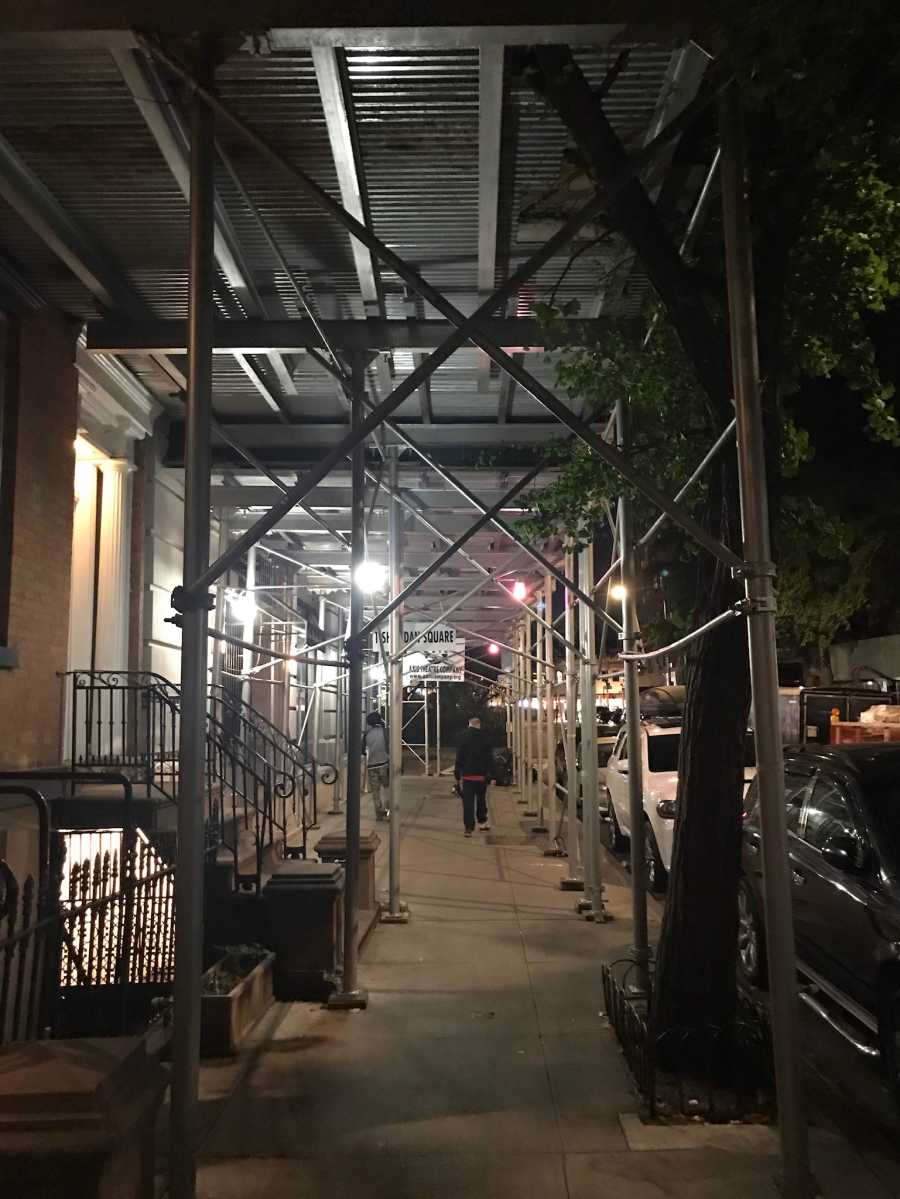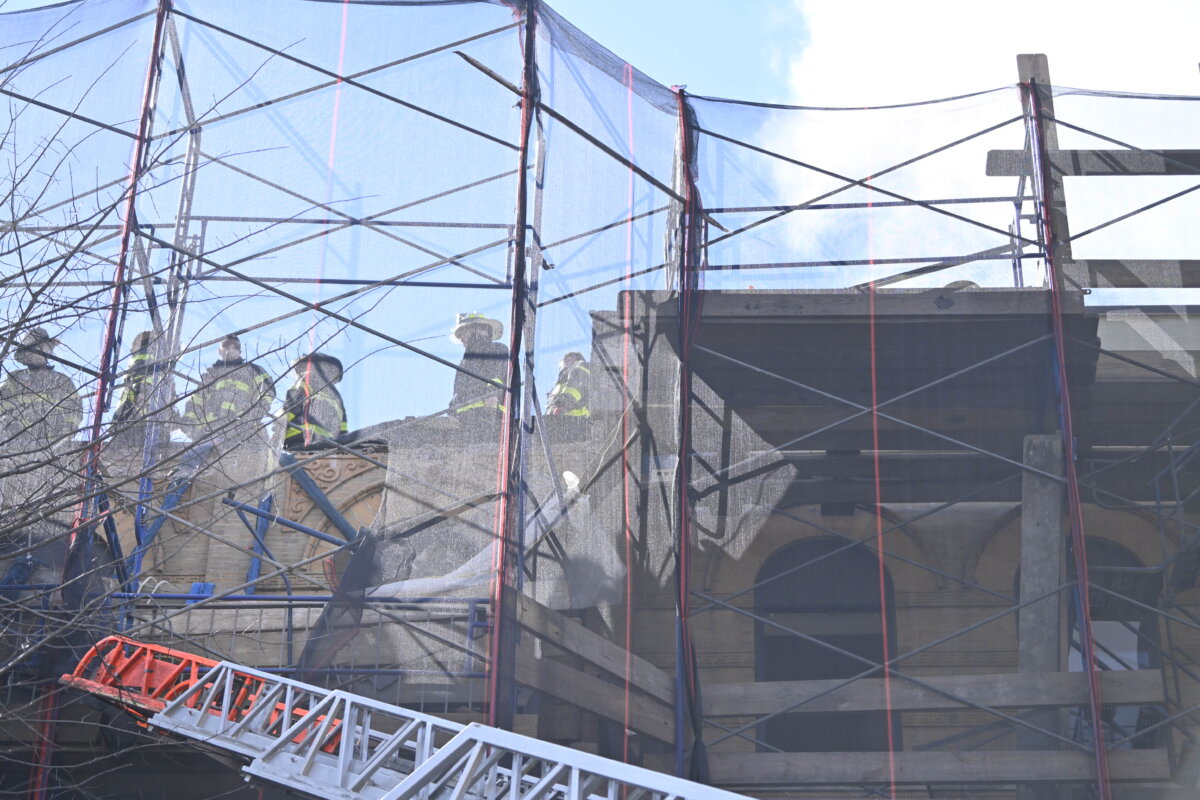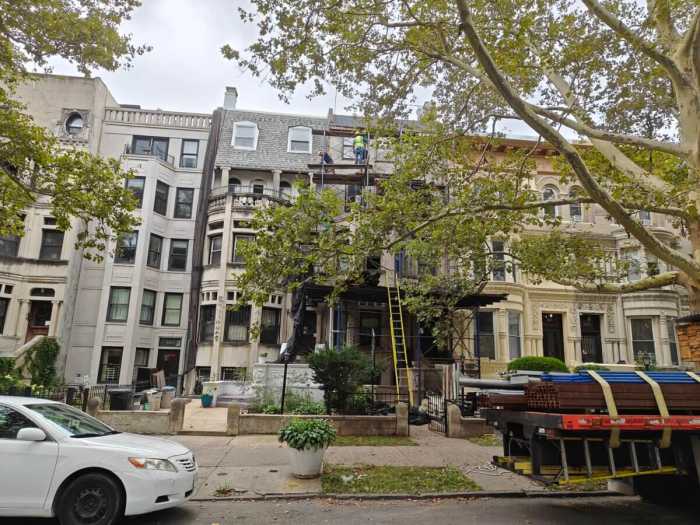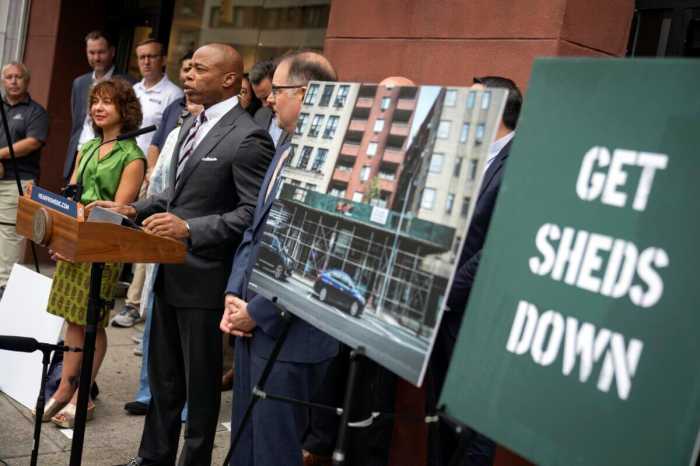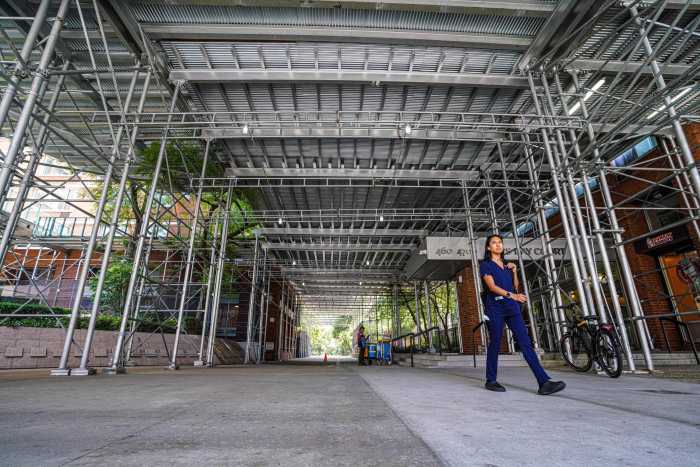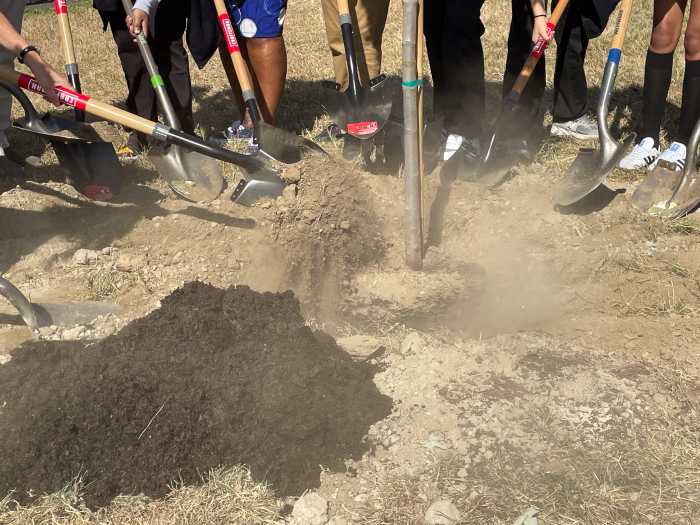At the top of the list of noxious uses of New York City’s precious public space – along with illegal placard parking and unlicensed street vending – is the scourge of sidewalk sheds. They are dank, dark, smelly and, too often, spell a death knell for retail. These supposedly temporary structures, required for building maintenance and construction, have been a fixture on our streets for far too long. And where they ought to denote progress, they far too often signal stagnation and decay.
While sheds are needed at times, we need to deal with the ones that languish unchecked to make sure they don’t impede economic development and quality of life. A package of bills currently at a standstill in the City Council would do just that.
First, there’s the good kind of shed – yes, they do exist — that correlates to the delivery of desperately-needed housing, grocery stores, and new businesses. With 150 projects completed since its 2004 rezoning, 18 projects under construction, and another 26 planned, Downtown Brooklyn is very familiar with this type of shed. These “necessary” sheds can be improved with legislation like Intro 391 that would elevate their appearance — making them more attractive, safer, and less intrusive on pedestrian space. Just because a shed is necessary doesn’t mean it has to be a blight on the neighborhood.
There are also many instances when sidewalk sheds are erected out of necessity but there is no active construction taking place. Intro 393 would address this by creating timeframes for the removal of sheds in the absence of active work. Intro 661 doubles down on this effort, enforcing penalties on property owners who fail to apply for necessary work within six months of installing a shed.
Then there are the more frustrating examples — those that due to cost, negligence, or inertia, stay up year over year, decade over decade. Local Law 11, also referred to as the Façade Inspection Safety Program, requires that all buildings over six stories have their façades inspected every five years. When unsafe conditions are reported, sidewalk sheds are erected to ensure safety while work is done. Far too often, however, the work is not done, and sheds are left standing indefinitely.
Our district has a few of those, too. Some are the result of private building owners not doing their part and delaying repairs, but the city itself needs to do better. City-owned sheds constitute 15% of those that are considered longstanding (five years and older) in New York City, and are frequently the biggest, such as the one shrouding the Supreme Court building at 360 Adams Street in Downtown Brooklyn. This ramshackle shed – the length of five football fields – celebrated its 17th birthday this year and has cost taxpayers hundreds of thousands of dollars in fees paid to the private contractor that owns it. Across the road, a massive sidewalk shed was erected at the municipal office building at 345 Adams Street in 2020. The double-sized sidewalk shed surrounded the entire building for three years, encroaching upon the sidewalks and hampering business for the once-vibrant “restaurant row” along Adams Street, which was already suffering due to the pandemic.
Intro 394 would solve for the issues that lead to sidewalk sheds feeling like permanent fixtures on city blocks. The bill not only extends façade inspection for new construction from five to eight years, which by itself would clear unnecessary red tape, but it also calls for the coordination of façade repairs on each city block, reducing the amount of time sidewalk sheds stay up.
The Department of Buildings is taking proactive steps to address sidewalk shed issues; pursuing legal action against violators, examining an extension of the current inspection cycle, and exploring design and artistic embellishments to make them safer and more visually appealing. Their efforts also include working to remove city-owned sheds and navigating complex bureaucratic overlaps. By implementing graduated fine structures and more stringent regulations, the City Council can discourage prolonged shed installations and mitigate their negative impacts on streetscapes and local businesses.
The City Council has a tremendous opportunity to act and improve quality of life for New Yorkers. As for Downtown Brooklyn’s Supreme Court building? Work starts on façade restoration in 2025, and the shed is expected to come down by the end of 2027. But we don’t need to wait that long to improve sidewalk sheds across the city. The City Council should act now and move these bills towards passage.



